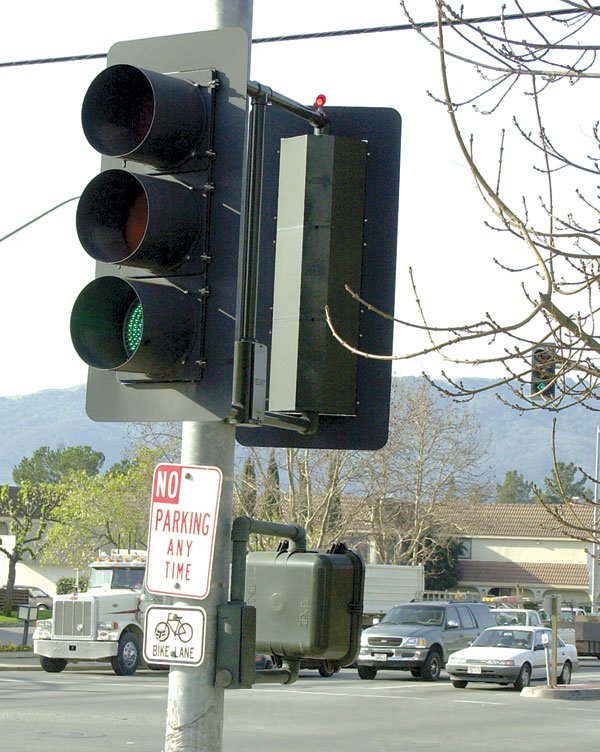GILROY
– In a rush and think you can make it through that yellow light?
Well, you might want to think again.
GILROY – In a rush and think you can make it through that yellow light? Well, you might want to think again.
Six Gilroy-area intersections will be among 38 countywide to receive increased attention from authorities – including new red-light monitoring devices and stepped-up police enforcement – through a new countywide campaign to reduce crash-related deaths and injuries.
The initiative, titled “Crashes Aren’t Accidents, Stop When It’s Red,” will combine electronic monitoring technology, increased enforcement and public education to re-establish respect for traffic signals and boost safety. It was launched by the Traffic Safe Communities Network, an alliance of government agencies and community groups formed by the county’s Public Health Department to make streets and highways safer.
Officials with the network say red-light running has become “a national epidemic,” and note that one in three Americans knows someone who’s been killed or injured by a red-light runner, according to a survey by the U.S. Department of Transportation.
“Red-light runners play Russian roulette with our lives every time we drive, walk or bicycle into an intersection,” said Paul Gratz, the network’s program manager.
In Gilroy, the crackdown will target intersections along Leavesley Road, Welburn Avenue and First Street. Together, the streets form a major east-west thoroughfare that connects to both state Highway 152 and U.S. 101 and serves most of the city’s current retail development, including the Gilroy Premium Outlets and several west-side shopping centers.
Specific intersections in the new campaign include Leavesley Road as it crosses Murray and Forest avenues and Arroyo Circle; First Street crossing Wren Avenue and Santa Teresa Boulevard; and Monterey Road at Welburn Avenue.
Signal poles at each intersection will now be equipped with special electronic monitoring equipment called “rat boxes.” The devices do not take photographs, but instead emit a high-intensity light that allows police to park at a distance from the intersection but still recognize if the light has changed – and if a car has sped through it anyway.
At roughly $100, the devices are much cheaper than cameras, said alliance spokeswoman Teresa Chagoya. Funding for the boxes came through the state Office of Traffic Safety and the federal government.
Signs posted at each intersection also will forewarn motorists of the crackdown and the $281 minimum fine for running a red light.
Through April, the network also will pay for a series of radio commercials during morning and evening commute times. The rotating spots – with messages like “You see the yellow light. You think, ‘I can make it.’ Not this time” – will play on more than 70 radio stations.
“Hopefully they just educate people we’re out there and that the (rat boxes) are in place,” Chagoya said.
From 1999 to 2001, there were 1,144 crashes at the 38 intersections targeted in the campaign – which range from Highway 17 to El Camino Real – with more than one-third resulting in death or injury. From 1994 to 2001, motorists who ran red lights or stop signs caused 26 deaths and more than 9,500 injuries countywide. The collisions usually are caused by drivers who are distracted, stressed or in a hurry and are especially dangerous because they involve impacts to the sides of vehicles, where there is less protective support.
But during a five-month pilot test program the network ran in 2000 during peak commute times at three intersections, the frequency of red-light running dropped by 12 to 60 percent.















